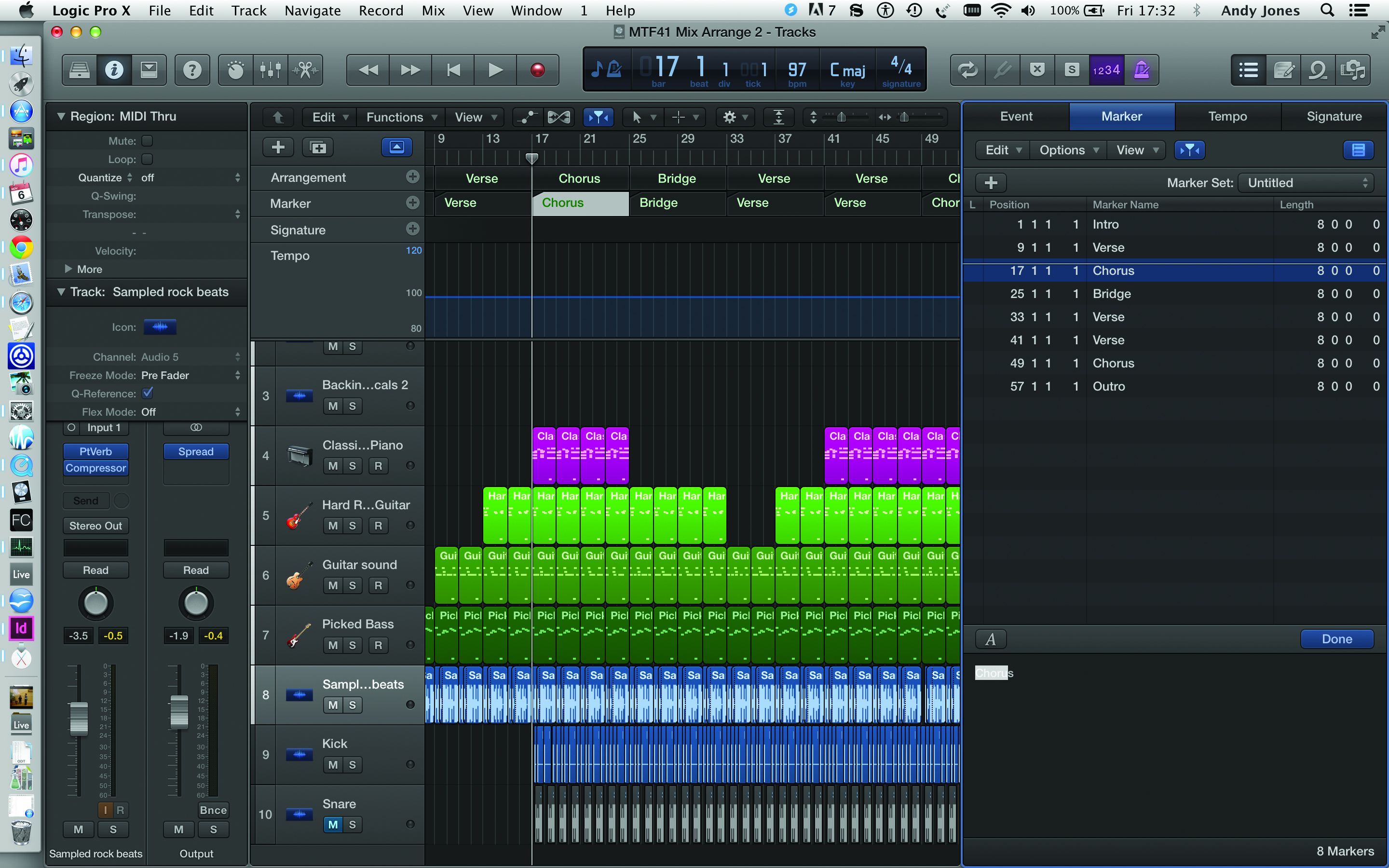

- #How to make beats using logic pro 8 how to
- #How to make beats using logic pro 8 full
- #How to make beats using logic pro 8 software
- #How to make beats using logic pro 8 series
You’ll also find particularly creative functions in here that almost fit into the FX category, like Note Repeat, Chance, and others.

This is where we program and edit things like the Velocity, Gate, Tie, Octave, and other parameters for each row and step in our pattern. This means we are viewing and editing the actual note steps of our musical pattern in the rows currently.įlipping over to the Edit Mode selector button directly to the right will change our view on the rows grid to the selected edit mode instead (this button is also a pull-down menu where you can select which edit mode to view). Sitting just atop the Row headers, you’ll see the “+” Add Row pop-menu for editing which kit pieces or notes are available in this particular pattern’s Step Sequencer interface.īy default, we are set to the Step On/Off view option you see along the top Step Sequencer menu bar in the interface window. The Row header also houses the subrow disclosure triangle, and various other controls like mute, solo, and more.
#How to make beats using logic pro 8 software
Logic Pro Step Sequencer Interface Essentials:Īlong the left-hand side of the Step Sequencer interface we see the Row headers for the notes on our selected software instrument, each with a row of steps in the Step Sequencer grid to the right. On the Live Loops side of things, Control-click an empty software instrument cell on the grid and select Create Pattern Cell from the shortcut menu. In the Tracks area, Control-click on an empty software instrument track and select Create Pattern Region from the shortcut menu.
#How to make beats using logic pro 8 how to
How to create Step Sequencer patterns in Logic Pro X: Typically used with MIDI-based tracks like Quick Sampler or any other software instrument, Drummer, and your external gear, it can be used to create beats and note-based melodic parts for your songs and audio projects. Step Sequencer patterns are housed inside of “pattern regions” in the Tracks area and “pattern cells” in the Live Loops grid. With the new Step Sequencer comes a new region type. But when you’re just getting started with the wonderful new world of Logic Pro X sequenced-based music-making, there are a few important elements to the process to keep an eye on:Ĭreating Step Sequencer Pattern Regions/Cells: Everything works just like your typical sequencer for the most part, and now with the new Step Sequencer Inspector, most of the editor tools are easily accessible. Most Logic or music programming veterans will be able to dive right in here.
#How to make beats using logic pro 8 full
Step Sequencer has been thread throughout Logic Pro X with a new region type to house it, full compatibility with Live Loops cells, and even as a very powerful new automation tool for audio tracks. From there, we have a host of customization controls and options for everything from adjusting the number of steps and reversing the direction of the pattern, to the velocity of each note or step, and much more. The rows consist of “steps” - representing each beat in our pattern - that you click to turn on and off to create a beat/loop/pattern.

#How to make beats using logic pro 8 series
In the most basic sense, Step Sequencer is a series of looping rows of notes in a grid where we can create musical patterns with software instruments. It offers up another way for producers to get creative with their software instrument library, subsequently adding a ton of value to the LPX experience for new users trying decide which DAW to align with, all while making it an even more versatile musical recording tool overall. While there were some options in Logic for step-like sequencing previously, the team has created a brand new editor from the ground up with a host of powerful creative tools on-board, loads of preset patterns you can manipulate, and a tight new interface to control it all from. Its introduction continues the trend of bringing powerful new workflows to Logic Pro X inspired by popular vintage products and other DAWs, but with that particular Apple touch of course. Not unlike something found in vintage drum machines and hardware sequencers, we can now program our software instruments in the new Logic Pro X 10.5 editor and creative tool known as Step Sequencer. With the Logic Pro Step Sequencer comes a new way to interact with MIDI and automation data.


 0 kommentar(er)
0 kommentar(er)
